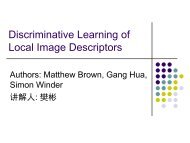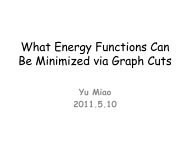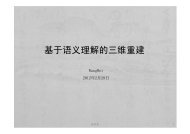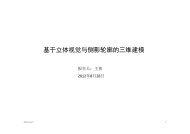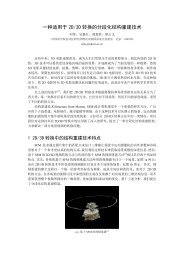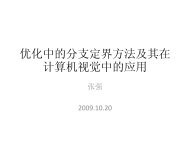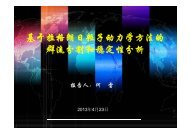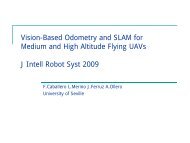Rotationally Invariant Descriptors using Intensity Order ... - IEEE Xplore
Rotationally Invariant Descriptors using Intensity Order ... - IEEE Xplore
Rotationally Invariant Descriptors using Intensity Order ... - IEEE Xplore
Create successful ePaper yourself
Turn your PDF publications into a flip-book with our unique Google optimized e-Paper software.
This article has been accepted for publication in a future issue of this journal, but has not been fully edited. Content may change prior to final publication.<br />
<strong>IEEE</strong> TRANSACTION ON PATTERN ANALYSIS AND MACHINE INTELLIGENCE 6<br />
picked in [34]. Of course, there are many other local descriptors besides those variants of SIFT.<br />
Berg and Malik [35] proposed geometric blur for template matching. Forssen and Lowe [36]<br />
used the shape of detected MSER to construct the local descriptor. Chen et al. [26] proposed a<br />
descriptor based on the Weber’s Law [37].<br />
In order to deal with the problem of illumination changes, some researchers utilized intensity<br />
orders since they are invariant to monotonic intensity changes. Mittal and Ramesh [38] proposed a<br />
change detection method which penalizes an order flip of two pixels according to their intensities.<br />
Gupta and Mittal [39] proposed an illumination and affine invariant point matching method which<br />
penalizes flips of intensity order of certain point-pairs near keypoints. Gupta and Mittal [25]<br />
proposed a monotonic change invariant feature descriptor based on intensity order of point pairs<br />
in the interest region. The point pairs are carefully chosen from extremal regions in order to<br />
be robust to localization error as well as to intensity noise. Matching this kind of descriptors<br />
is based on a distance function that penalizes order flips. Tang et al. [28] used a 2D histogram<br />
of position and intensity order to construct a feature descriptor to deal with complex brightness<br />
changes. Heikkila et al. [14] proposed to use a variant of LBP (Local Binary Pattern) [40], i.e.,<br />
CS-LBP which encodes intensity ordinal information locally for feature description, the obtained<br />
descriptor was reported to have better performance than SIFT, especially for matching image<br />
pairs with illumination changes. Gupta et al. [29] generalized the CS-LBP descriptor with a<br />
ternary coding style and proposed to incorporate a histogram of relative intensities in their work.<br />
Therefore, their proposed descriptor captures both local orders as well as overall distribution of<br />
pixel orders in the entire patch.<br />
Besides low-level features (e.g., histogram of gradient orientation in SIFT) which are used<br />
for descriptor construction, choosing an optimal support region size is also critical for feature<br />
description. Some researchers reported that a single support region is not enough to distinguish<br />
incorrect matches from correct ones. Mortensen et al. [15] proposed combining SIFT with global<br />
context computed from curvilinear shape information in a much larger neighborhood to improve<br />
the performance of SIFT, especially for matching images with repeated textures. Harada et al. [41]<br />
proposed a framework of embedding both local and global spatial information to improve the<br />
performance of local descriptors for scene classification and object recognition. Cheng et al. [42]<br />
proposed <strong>using</strong> multiple support regions of different sizes to construct a feature descriptor that<br />
is robust to general image deformations. In their work, a SIFT descriptor is computed for each<br />
November 26, 2011 DRAFT



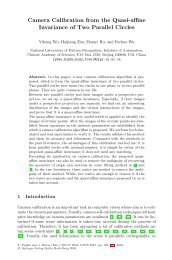
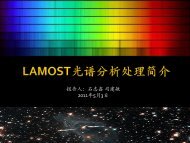
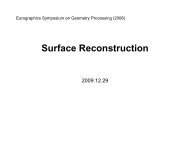
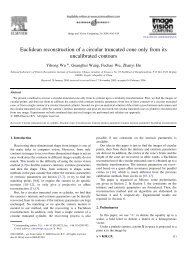
![Accurate, Dense, and Robust Multi-View Stereopsis (PMVS) [1,2,3]](https://img.yumpu.com/19388840/1/190x135/accurate-dense-and-robust-multi-view-stereopsis-pmvs-123.jpg?quality=85)
